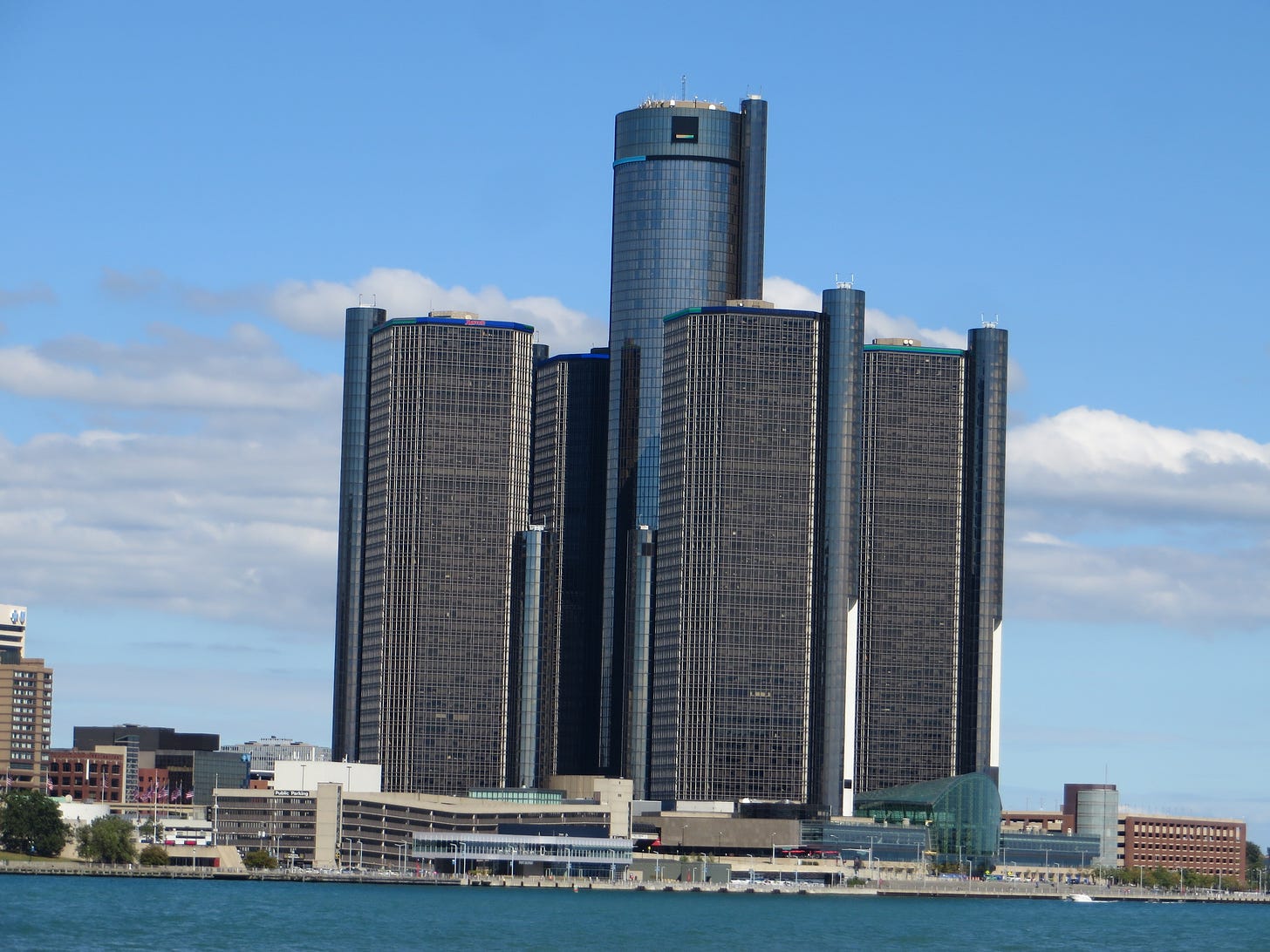You boys ain't from around here, are ya?
Ruminations about what it means to be from somewhere.
The Renaissance Center in downtown Detroit, along the Detroit River. Via Ken Lund and Wikimedia Commons.
The landscape of my childhood is disappearing. Has disappeared, actually. Earlier this month, two huge smokestacks about 2 miles away from my childhood home were demolished. They joined the smaller stacks felled at some unremembered time. First black and then candy-cane striped, they stood steadfast outside my bedroom window and over the childhood schoolyard, dominating the landscape like the Eye of Sauron. Later, the mothballed coal-fired boiler house will follow, allowing the electrical utility in Detroit to put in something cleaner. And for my hometown to redevelop some riverfront property.
Between the stacks and the Lions playoff hopes going down in a heap as well as a number of littler things, I’ve been thinking a lot lately about what home is exactly. I know what it means when the hotel asks for your hometown address. But where am I from? Not sure I can ever say I’m from Minnesota, not having gone to kindergarten there. But the metro Detroit that I know? That’s quickly disappearing, if it hasn’t already.
I found a little comfort in that question this weekend with a new book: “Everything I Learned, I Learned in a Chinese Restaurant,” by Curtis Chin. A few years older than me, Chin tells of his 1970s and ‘80s upbringing and tales from Detroit’s Cass Corridor and the suburbs and even Ann Arbor with names familiar to anyone from that time: Coleman Young. Bill Bonds. Bo Schembechler. Devil’s Night. Dead Things. And while his story and experience aren’t mine, there are common threads, refracted through his family and circumstances, that instantly transport me home. Less a place, but a litany of experiences that define me, made me who I am. And make me feel at home, rooting for my Lions and Wings, even if I find myself tracking the exploits of the Twins more than the Tigers, because baseball is a daily game. (May my 1987 self forgive me.)
So in my house in Minneapolis, I can scan YouTube for video clips of Detroit stadiums or media stars that disappeared decades ago. Once I finish Chin’s book, I might turn back to Elmore Leonard’s tales of Detroit crime. Watching the recent TV adaptation of “City Primeval,” I found too much of Chicago in its landscape. (I might not be up on what Detroit is now, but I know what it isn’t.) For better and for worse, I also see a lot of Detroit and its crossroads from yesteryear in the issues now confronting Minneapolis and Minnesota. Minneapolis redeveloped along the riverfront, too, a while ago. Maybe those crossroads are two-way streets?





As a transplanted michander who has lived in Minnesota since 1995, this was a great read.